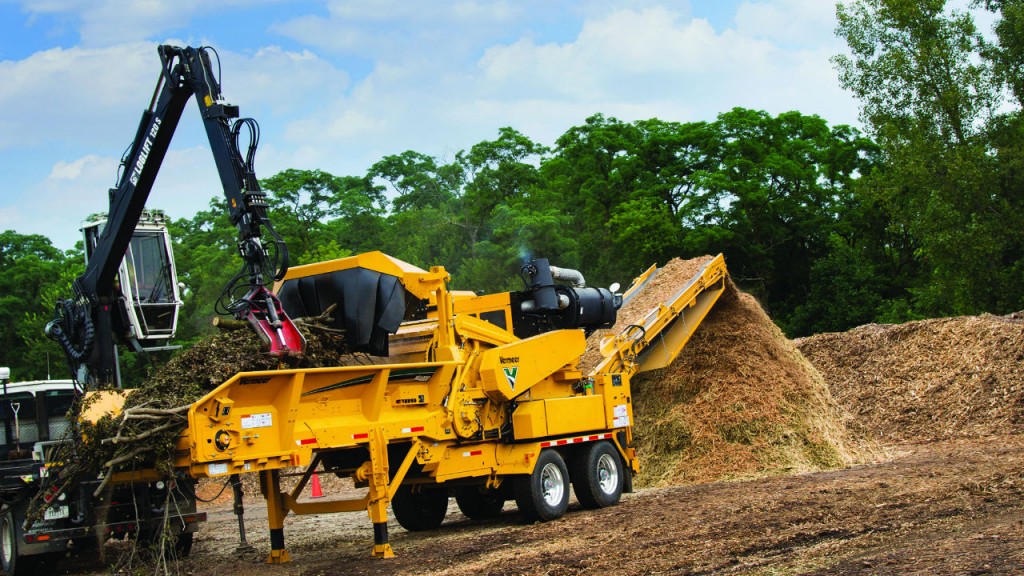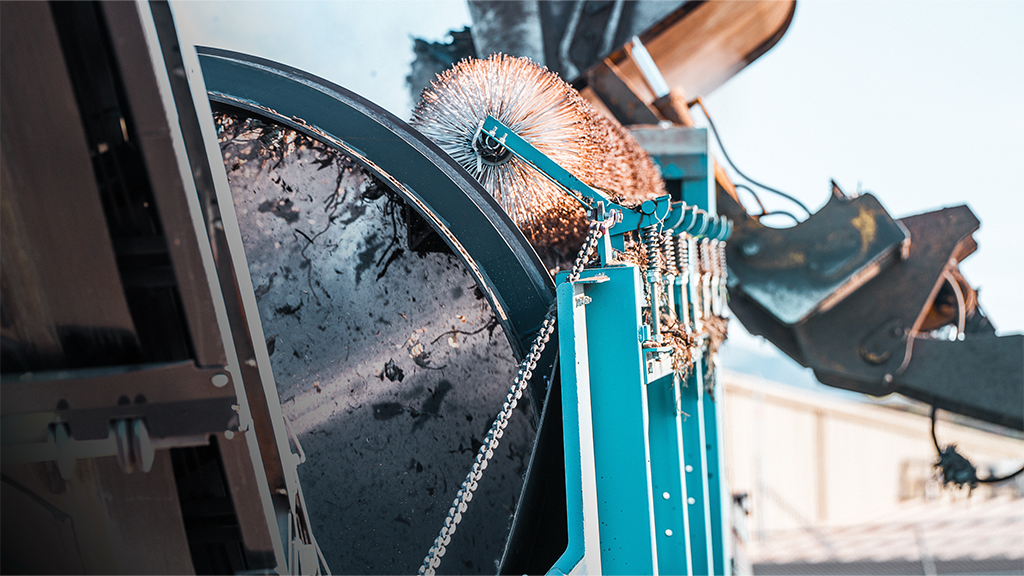Keeping an eye on recycling trends from across the pond
Why recyclers in North America need to keep up to date on what is happening in Europe when it comes to recycling rates, landfill taxes and regulations

In the increasingly interconnected world we live in now, trends come from all around the globe. When it comes to recycling, however, Europe is leading the way.
Just look at their goals. A European Union (EU) directive calls on the organization’s 28 member states to recycle 50 percent of municipal solid waste and 70 percent of construction and demolition waste by 2020. The intent, according to the legislation, is to “move towards a European recycling society with a high level of resource efficiency.”
It’s important for North American-based recycling contractors and municipalities to be aware of what’s going on oversees because these types of trends tend to start in Europe and work their way westward, according to Jeff Bradley, recycling and forestry product manager at Vermeer. Think of things like noise regulations and dust reduction on construction jobsites and creature comforts on machines, which first caught on in Europe and now are becoming more common in North America.
“I think some of those recycling targets will migrate over,” Bradley says. “Canada has been more proactive than the U.S. the past few years. And in the U.S., I see our East and West coasts as being the early adopters, then it will spread throughout the rest of the country.”
Some of this is already starting. For instance, the city of Edmonton diverts more than 50 percent of residential waste from the landfill, and on its website the city says that figure will increase to 90 percent with a new waste-to-biofuels facility. California state regulations taking effect over the next few years will require diverting food and yard waste from landfills to help reduce methane emissions. Several Northeast U.S. states have restrictions on food waste going into landfills.
As has happened in Europe, higher recycling rates will affect everything from business models to how landfills and recycling yards are designed to equipment usage to government regulations. With that in mind, here’s a closer look at what’s occurring in Europe.
Recycling culture
The EU recycling directive says the goal is to become a “recycling society.” There’s still work to do, but Bradley says the culture there is already much further along than in North America.
“One of the big differences is the mentality of the people,” he says. “It’s almost been engrained in every part of their lives for many years.”
He’s seen this just walking down the streets of various European cities. There are different bins to toss garbage and recyclable materials — again, something that’s increasingly being seen in North America, too — but people don’t have to stop and check what belongs in which container. They just know.
“I’ve seen people pick stuff up off the sidewalk and throw it in a bin — the correct bin, by the way,” Bradley says. “I think our younger generation in North America is going to have that attitude when they get older because it’s being taught in school. They’re being educated earlier and earlier on the benefits of recycling and its positive effect on the environment.”
Bradley says environmental concerns are the biggest driver of recycling trends in Europe, be it choices made by people or government regulations. Countries vary in their recycling habits, however. Many of the most progressive states are found in central Europe, with Germany and Austria leading the way, according to Bradley. Sweden also has good recycling rates, and Italy and Ireland have come on strong the past few years, he says.
Public support hasn’t been the only thing to spur recycling. Numerous countries in recent years have implemented a surcharge on items being landfilled, Bradley says. Landfill taxes are even higher in Australia, and Bradley says it and some of the European countries put the money toward recycling infrastructure.
In terms of collection, many European countries have gone to source separation recycling and have three or more curbside bins instead of one or two.
“That’s one of the trends that will come to North America in time,” Bradley says. “There are a few communities starting to do that. It’s going to grow, definitely.”
Green and wood waste
Europe’s advanced views on recycling and the environment have led to a growing use of anaerobic digestion to process food waste. In anaerobic digestion, microorganisms break down organic matter in the absence of oxygen and create biogas, which can be burned in a boiler or engine to produce heat or electricity.
In North America, anaerobic digestion and composting are usually thought of as an either-or situation. But in Europe, recyclers are using the two in tandem. In this scenario, the digestate, which is the leftover material produced by anaerobic digestion and is rich in nutrients, becomes a feedstock for composting.
“The Europeans use a majority of the compost as fertilizer for agriculture,” Bradley says.
One of the biggest differences between North America and Europe is found in wood waste. In North America, a lot of it goes to pellet mills, the soil and lumber industry and to create mulch. In Europe, green waste is processed by a chipper or grinder to create boiler fuel for power generation.
Equipment reflect trends
The changes in European recycling and the growing volumes are driving how material is collected, what machinery is used, and what end products are generated, Bradley says. Another driver is that recycling yards in Europe are smaller and closer to populated areas than their larger, remote North American counterparts. That means noise, odor control and equipment are critical — all while more material is being processed as recycling rates rise.
“You have to be smarter at what you’re doing,” Bradley says. “You may need to be more efficient and get material in and out quicker. You may not have as much storage onsite. You may need to look at equipment size and adjust to meet the increasing volumes and to minimize stockpiling of material.”
Not as many changes can be made in the composting process, which is more reliant on Mother Nature, but Bradley says some operations are switching to aerated floors and a continuous-stack application with an elevating-face compost turner to speed up the process and to minimize the required space.
The effects of these European trends can also be seen on equipment designs. For example, with stricter noise regulations in Europe and more urban facilities, Vermeer moved from a large traditional cooling fan to an electrically powered fan array on its HG4000 horizontal grinder to reduce sound levels.
Another example is the Vermeer TR620 trommel screen, which has a smaller footprint than other Vermeer trommel screens to help customers with limited space.
Public opinion matters
The interesting thing about the recycling industry is the role the public plays. Regular citizens are very passionate about the environment and therefore recycling in a way that’s not seen in, for example, the utility installation, road construction or tree care industries.
“They’re so influential and so outspoken that they can influence government regulations,” Bradley says.
It’s not just contractors, public works officials and the government that establish the trends in recycling. And that’s something that North America and Europe do have in common.



